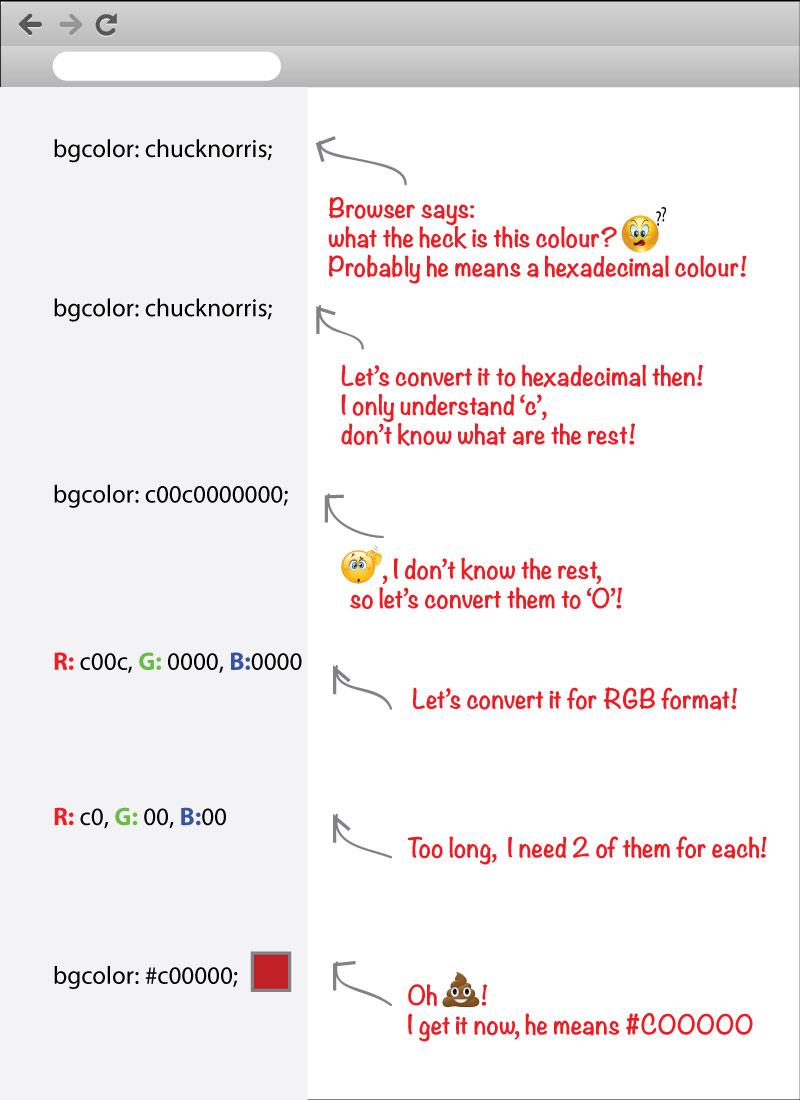It’s a holdover from the Netscape days:
Missing digits are treated as 0[...]. An incorrect digit is simply interpreted as 0. For example the values #F0F0F0, F0F0F0, F0F0F, #FxFxFx and FxFxFx are all the same.
It is from the blog post A little rant about Microsoft Internet Explorer's color parsing which covers it in great detail, including varying lengths of color values, etc.
If we apply the rules in turn from the blog post, we get the following:
Replace all nonvalid hexadecimal characters with 0’s:
chucknorris becomes c00c0000000
Pad out to the next total number of characters divisible by 3 (11 → 12):
c00c 0000 0000
Split into three equal groups, with each component representing the corresponding colour component of an RGB colour:
RGB (c00c, 0000, 0000)
Truncate each of the arguments from the right down to two characters.
Which, finally, gives the following result:
RGB (c0, 00, 00) = #C00000 or RGB(192, 0, 0)
Here’s an example demonstrating the bgcolor attribute in action, to produce this “amazing” colour swatch:
<table>
<tr>
<td bgcolor="chucknorris" cellpadding="8" width="100" align="center">chuck norris</td>
<td bgcolor="mrt" cellpadding="8" width="100" align="center" style="color:#ffffff">Mr T</td>
<td bgcolor="ninjaturtle" cellpadding="8" width="100" align="center" style="color:#ffffff">ninjaturtle</td>
</tr>
<tr>
<td bgcolor="sick" cellpadding="8" width="100" align="center">sick</td>
<td bgcolor="crap" cellpadding="8" width="100" align="center">crap</td>
<td bgcolor="grass" cellpadding="8" width="100" align="center">grass</td>
</tr>
</table>
This also answers the other part of the question: Why does bgcolor="chucknorr" produce a yellow colour? Well, if we apply the rules, the string is:
c00c00000 => c00 c00 000 => c0 c0 00 [RGB(192, 192, 0)]
Which gives a light yellow gold colour. As the string starts off as 9 characters, we keep the second ‘C’ this time around, hence it ends up in the final colour value.
I originally encountered this when someone pointed out that you could do color="crap" and, well, it comes out brown.


whippersnappersis absolutely a valid color code. – Rosas